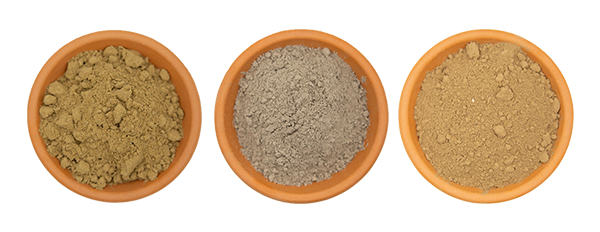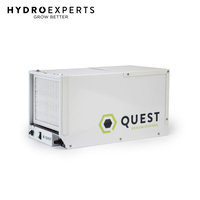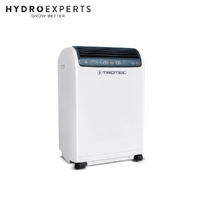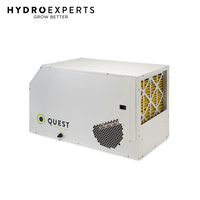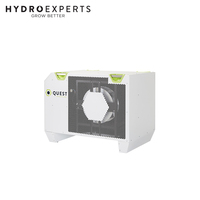Understanding BTUs for Your Grow Room: A Complete Australian Guide
By Hydro Experts | 8 May 2025
The optimal indoor garden requires a good deal of planning and exceptional climate control. It's important to know and understand BTUs - British Thermal Units - and to create the best growing conditions (vegetables, flowers, or cannabis here in Australia) in your indoor garden.
This guide will explain BTUs, how to calculate your grow room's BTU needs, and how to determine the best heating or cooling devices for your situation.
What is BTU?
BTU stands for British Thermal Unit, a unit of thermal energy. Specifically, 1 BTU is the amount of energy necessary to raise the temperature of 1 pound of water by 1 degree Fahrenheit. Australia uses the metric system, however, BTUs still represent the standard measure of heating and cooling capacity in HVAC equipment globally.
Essentially, BTUs measure the amount of heat that can be added or taken away from your grow room. When you are shopping for air conditioners, heaters, or a full climate control system for your indoor garden, BTU ratings will be stated on the specifications of the equipment that you purchase.
To put BTUs in perspective:
- A small portable air conditioner might offer 8,000 BTUs of cooling power
- A medium-sized split system air conditioner typically provides 12,000-18,000 BTUs
- Commercial-grade HVAC systems can deliver 60,000+ BTUs
For indoor growers in Australia, understanding BTU requirements is essential since the challenges brought on by our climate are unique. Your location will certainly influence your climate control requirements, from the tropical humidity in Queensland to the dry heat of Western Australia to the cooler conditions in Tasmania.
How to Calculate BTU Requirements for Your Grow Room
Determining the correct BTU capacity for your grow room involves several factors. While there are simplified formulas, accounting for all variables ensures your system will perform adequately year-round.
Basic BTU Calculation Formula
The fundamental BTU calculation starts with the room volume:
BTU requirement = Room volume (cubic meters) × 337
However, this basic formula doesn't account for many crucial factors specific to grow rooms. For accurate results, you'll need to consider:
Essential Factors That Affect BTU Requirements
Room Dimensions: The physical size of your grow space is the starting point.
Lighting System: High-intensity discharge (HID) lights, LEDs, and fluorescents generate different amounts of heat. As a rule of thumb:
- LED lights: Add approximately 2,800 BTUs per 1,000 watts
- HPS/MH lights: Add approximately 3,400 BTUs per 1,000 watts
- Fluorescent lights: Add approximately 2,000 BTUs per 1,000 watts
Number of Plants: More plants mean increased transpiration, which adds humidity to the space.
Insulation Quality: Australian buildings vary significantly in insulation standards. Older properties often have poor insulation, increasing BTU requirements.
External Temperature: Your local climate is crucial. For example:
- Brisbane growers face average summer temperatures of 30°C
- Melbourne experiences more variable conditions, with summer averages around 26°C
- Hobart growers might need more heating capacity during the winter months
Desired Temperature Range: Most indoor gardens thrive between 20-28°C, depending on the growth phase.
Sun Exposure: Direct sunlight through windows can dramatically increase heat load.
Equipment Heat Output: Ballasts, pumps, dehumidifiers, and other equipment generate additional heat.
Comprehensive BTU Calculation
For a more accurate assessment:
Calculate the base BTU requirement for your room size:
Base BTU = Room volume (m³) × 337
Add lighting heat load:
Lighting BTU = Total lighting wattage × appropriate conversion factor
Add equipment heat load:
Equipment BTU = Estimated wattage of additional equipment × 3.41
Apply adjustment factors for:
- Insulation quality (+10-30% for poor insulation)
- Sun exposure (+10-25% for rooms with direct sunlight), Temperature differential (the difference between outside max temperature and desired indoor temperature)
Include a safety margin of 10-15%
Example: Calculating BTUs for a Melbourne Grow Room
Let's determine how much cooling you will need for your 4m × 3m × 2.4m grow room in Melbourne. The room has a volume of 28.8 cubic meters. You have installed 2,000 watts of LED grow lights, plus another 500 watts for equipment (e.g., pumps and fans). The room has average insulation, and the south wall gets some sun in the afternoon. In summer, the outside temperature can reach 35°C, and you want to cool it down to a comfortable 24°C.
Calculation:
- Base BTU: 28.8 m³ × 337 = 9,706 BTUs
- Lighting heat: 2,000 watts × 2.8 = 5,600 BTUs
- Equipment heat: 500 watts × 3.41 = 1,705 BTUs
- Subtotal: 17,011 BTUs
Adjustments:
- Average insulation: +15% = 2,552 BTUs
- Afternoon sun: +15% = 2,552 BTUs
- Temperature differential (11°C): +10% = 1,701 BTUs
Safety margin: +10% = 1,701 BTUs
Total BTU requirement: 25,517 BTUs
For this grow room, an air conditioning system rated at approximately 26,000 BTUs would be appropriate.
BTU Requirements for Different Australian Climates
Australia's diverse climate zones create varying BTU requirements:
Tropical North (Queensland, Northern Territory)
In warm environments where it’s hot throughout the year (>30°C) with high humidity, you will need higher cooling capacity. Generally speaking, if you are in a southern climate, your BTU needs are likely to be 20–30% higher than it would be in cooler regions.
In this context, a cooler environment is required, but you also need to consider dehumidification, not just cooling; high levels of moisture will greatly affect your grow room environment. As a general rule of thumb, it would be prudent to add a 15–20% safety margin in calculating your cooling requirements.
Temperate Coastal (Sydney, Melbourne, Adelaide)
In areas with moderate temperatures and some seasonal variation, you have a more equal balance of heating and cooling loads to contend with. Because humidity is typically moderate as well, you also do not need to be as concerned about the extremes of moisture.
You will likely need both heating and cooling, depending on the season, but neither should be extreme. In these conditions, we usually see the heating and cooling loads relatively equal out, and adding a 10% to 15% safety margin to your BTU calculations is usually adequate within these conditions.
Arid Interior (Central Australia, Western Australia)
If you are managing growing situations where there are extreme shifts in temperature from day to night, you will have to be careful. Daytime temperature can reach extreme highs, so you will need an extreme cooling capacity, while the night may require heating.
The air can also be very dry, and you need to monitor the changing humidity levels to avoid stress on your crops. Under these conditions, we recommend adding a 15–20% safety margin to your BTU estimates for good measure.
Cool Southern (Tasmania, mountain regions)
In areas that have lower (much lower) average temperatures, you will likely need more heating than cooling. Humidity levels will generally be only moderate, so it is not as much of a concern, but still something you will want to monitor.
For these areas, a 10–15% safety factor on your heating and cooling estimates should keep your environment stable and suitable for plant growth.
Using the Hawthorne BTU Calculator
The Hawthorne BTU Calculator is an invaluable tool for Australian growers. This online calculator simplifies the process of determining your grow room's BTU requirements.
Step-by-Step Guide to Using the Calculator
- Enter Room Dimensions: Input the length, width, and height of your grow space in feet (convert from meters if necessary: 1m ≈ 3.28ft).
- Input Lighting Details: Specify the number and type of lights in your setup.
- Adjust for Insulation: Select the insulation quality that best describes your grow room.
- Enter Temperature Information: Input your desired indoor temperature and the maximum outdoor temperature for your location.
- Account for Additional Heat Sources: Include any CO₂ generators or other heat-producing equipment.
- Review Results: The calculator will provide recommended BTU requirements for your specific situation.
Remember that while the calculator provides an excellent starting point, you should consider Australia-specific factors that might not be fully accounted for in the tool:
When planning your setup, you need to be aware that most calculators are in imperial units, so you will have to convert from metric to imperial. Also, remember how intense Australian sunlight can be; it will add substantial heat load to your grow space, particularly in summer.
It would be a good idea to consider local electricity costs as well when you are deciding on your grow equipment, as the electricity costs of running cooling and dehumidification equipment will add to the overall cost. Remember, these areas of Australia experience extremely high peak summer temperatures, so you will want to account for these design extremes upfront.
Important Considerations for Australian Growers
Energy Efficiency and Electricity Costs
Australia has some of the highest electricity prices globally, making energy efficiency a crucial consideration:
When selecting an air conditioning unit, you should look for models with high Energy Star ratings, as they will save you in the long run. Additionally, you should also note the COP (coefficient of performance) and for seasonal air conditioning units, contact the EER (energy efficiency ratio): the higher these numbers, the better (a higher result means more efficient running).
To get a better idea of the cost incurred, you should then calculate the ongoing running costs based on the price of your local electricity. For example, in Queensland, the cost of electricity is generally around $0.20- 0.25 per kilowatt-hour, while in South Australia, the price of electricity can exceed $0.40 per kilowatt-hour during peak times.
Australian Standards and Regulations
When selecting climate control equipment:
Ensure your installation meets Australian electrical standards (AS/NZS 3000). If you are in a residential area, check the local noise regulations, and be aware of any water restrictions if you are using a water-cooled system. Additionally, check with your council regarding the location of external units.
Renewable Energy Compatibility
Many Australian growers are incorporating solar power:
If you're installing a solar system, be sure to size the system according to the load of your HVAC system. In addition, consider battery storage for running your system overnight. Use an inverter that is compatible with your solar system to avoid complications. and check to see if you qualify for rebates under the Small-scale Renewable Energy Scheme; it could save you money.
Humidity Control
Australia's varied climate creates diverse humidity challenges:
In tropical climates, you will want to focus on dehumidification to maintain the appropriate air moisture level, but in arid regions, in cases of dry spells, you may need to consider humidifiers. Plant growth is best when considering vapour pressure deficit (VPD), which relates humidity to temperature. For this reason, we typically find that integrated cooling and dehumidification systems work best to manage both.
Choosing the Right Cooling System
Based on your BTU calculations, you'll need to select appropriate equipment:
Split System Air Conditioners
Split system air conditioners have become increasingly popular for many homes in Australia respectively they are a good fit in many grow room set-ups. Available in sizes from 9,000 BTUs to 36,000 BTUs, you can find one that suits the size of your space. They are an economical choice for small to medium-sized grow rooms and can be found at stores such as The Good Guys, Harvey Norman, and Bunnings.
Ducted Air Conditioning
Ducted air conditioning systems are ideal for larger grow operations. Distributed temperature across the space is a great asset if you have dedicated areas. Although it costs more up front than a split air conditioning system, it is capable of larger areas if you are looking at capacities of 60,000 + BTU.
Purpose-Built Grow Room Solutions
Horticultural-specific units are made for grow rooms based on the set conditions unique to you. They typically have built-in humidity control, which also assists with plant growth. They are expensive but are fine-tuned to maximise your experience. Consider suppliers like the Hawthorne Gardening Company for horticultural-specific equipment.
Portable Units
The advantage of a portable unit is the flexibility of installation, since a permanent installation isn’t needed, and it can be moved as required. They are generally lower in capacity; normally, you’ll find portable air conditioners with 8000 BTUs to 14000 BTUs, meaning they are best suited for smaller spaces or if you need additional cooling in a larger room.
Conclusion
Calculating and meeting your grow room BTU requirements is crucial to your successful attempt at indoor gardening in Australia. With an understanding of the first principles of BTUs, considerations related to your local climate, and the use of devices such as the Hawthorne BTU Calculator, you should be able to create the optimum environment for your plants.
Remember that temperature environment control is an investment in cultivating value from your grow room. Undersized systems will always struggle to maintain a reliable environment; the other end of the spectrum is wasteful energy and excess costs, i.e., oversized equipment unnecessarily. You can save time (incubator conditions), money (reduced operating costs) and favour plant health (growth/yield) with accurate calculations based on your grow room's requirements.
No matter what location you are in, whether the tropical heat of Brisbane or the cooler climate of Hobart, the theories explained in this book will assist you in creating and maintaining a conducive growing environment throughout the year.
For tailored advice regarding your situation, consider contacting an HVAC contractor who specialises in horticultural applications or a grow equipment supplier that understands indoor gardens and the specific environmental requirements for your region in Australia.
FAQs
A BTU (British Thermal Unit) measures heating or cooling energy; knowing your BTU needs ensures you maintain the right temperature for healthy plant growth.
Multiply your room volume (m³) by 337, then add extra BTUs for lighting, equipment heat, insulation quality, sun exposure, and a 10–15% safety margin.
Yes — hotter, humid areas (like Queensland) need more cooling and dehumidification; cooler areas (like Tasmania) may need more heating.
Grow lights generate heat: add around 2,800 BTUs per 1,000W for LEDs and 3,400 BTUs per 1,000W for HPS/MH lights.
Yes, but size your solar and battery systems correctly to handle HVAC loads, and check for eligibility under Australia's renewable energy rebate programs.

